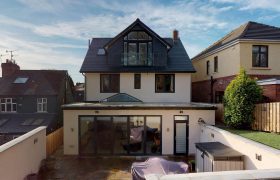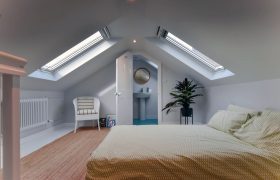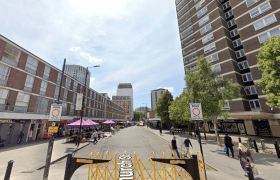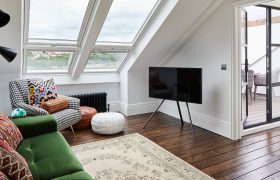
Unlocking Basement Potential: Benefits & Uses
Basements, often overlooked spaces beneath our homes, have the potential to transform properties into something truly extraordinary. As a leading planning services firm in London and the surrounding areas, Sam Planning is dedicated to helping property owners unlock the hidden potential of basements. In this article, we explore the numerous benefits and uses of basements and…

Expanding Horizons: Rear Extensions in London
Unleashing the Full Potential of Your Property with Tailored Rear Extensions Transforming your London property into a space that perfectly aligns with your lifestyle is a dream that can become a reality with the right development choices. Among the various options available, a rear extension stands out as a versatile and customizable solution. In this…

London Loft Conversions: Maximising Properties
As a property owner in London, it’s essential to understand the developments that you can have permission for in order to maximize the potential of your property. In this article, we’ll provide an overview of one such development – the loft conversion – and the planning application process involved in achieving planning permission for loft…

How to Apply for Planning Permission in London
Overview of the Planning System in London London is a city of constant development and growth, with new projects popping up all over the place. However, all construction work must first go through the planning system, which can be complex and time-consuming to navigate. In this article, we’ll provide an overview of the planning system…

The Importance of Planning Permission in London
The Importance of Planning Permission in London: Understanding the Planning Process When it comes to the construction or modification of buildings in London, one of the most important aspects is obtaining planning permission. Planning permission is a legal requirement in the UK that determines whether a proposed development is acceptable and whether it can be…

Latest Planning News – City of Westminster
Residents of Church Street have voted in favour of regeneration plans that call for the construction of 156 new council houses over three sites in the neighbourhood. In a poll conducted by Westminster City Council, 73% of voters approved the proposals, which also call for the re-provisioning of all 228 existing council dwellings in the…

Why Get A Certificate of Lawfulness for A PD?
Why should I get a Lawful Development Certificate for a Permitted Development Right? Simply, because you don’t really know if it is, and always going to be, a Permitted Development Right. And most importantly, a Lawful Development Certificate can save you a tremendous amount of money. Let’s show you how in the following cases… A…

Bio of our Entrepreneur & Director in Ami Magazine
The Biography of Sam Planning’s Entrepreneur & Director, Joel Stern Business Lunch Break in Ami Magazine: Weekly Insights from Business Leaders & Entrepreneurs Explore the Story of the successful entrepreneur, Joel Stern, director of Sam Planning through this article by Ami Magazine! Know his life story, his childhood, and his beginnings in business! Learn more…


